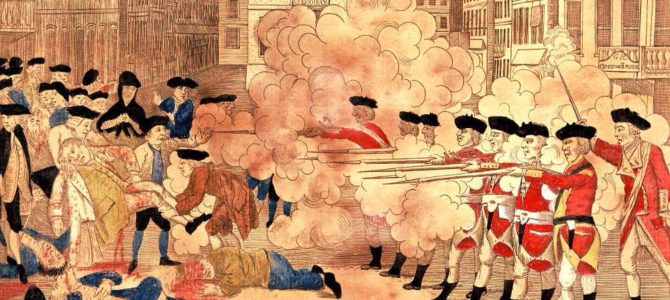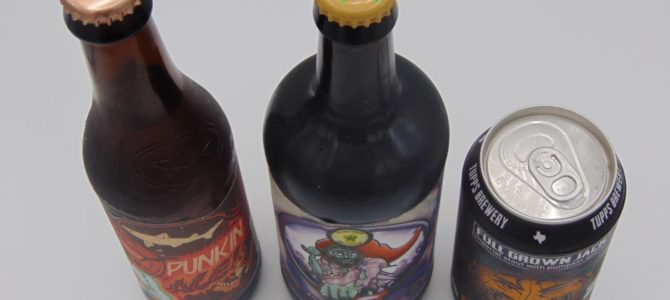Boston is a great American city. Flying in over the harbor’s mid-nineteenth century Fort Warren, the cliffs and ruins that inspired Shutter Island, and the half dozen lighthouses clinging to rocky Atlantic outcroppings, it might be the only flight I’ll choose the window seat.
My first lunch in the city is an easy call. A bread bowl of lobster bisque, a half dozen briny oysters, and a Harpoon IPA at Quincy Market’s Carpenter and the Walrus, half a mile from Paul Revere’s famed North Church.
A light golden brown, it is a crisp beer. Clean, refreshing, light on the mouth, its pine and grapefruit notes pair just as easily with a seafood lunch as with a cheese burger or a puff of tobacco. It’s one of a number of great IPAs I can find whenever I return home, including Opa Opa, started by two Greeks who felt like they’d gotten close enough to the American West to justify a cowboy-themed beer and steakhouse.
There was a golden age once — lasted maybe two decades — where you could walk into a bar in any good-sized city, order the local IPA, and be satisfied. The same held true for major airports. Even on an hour’s stopover, most terminals offered the beers their city was proudest of. They might be a little hoppy for your taste, or a little maltier than you’re used to; they might have a touch of sweetness you don’t care for, or you might discover a new favorite. No matter: If you ordered the local IPA, you’d be satisfied. They were all clearly IPAs — as ordered, as expected.
Those days are gone. Airports across the United States and Europe have given up their local beers, bowing to Goose Island, a white goose tap handle that was once a welcomed symbol in Chicago bars but in San Francisco, Charlottesville, or Glasgow is a symbol of bleak tyranny. Worse yet, while the name “IPA” lives on stronger than ever in America’s cities and towns, the beer itself has been replaced by a brew that does not look, smell, or taste anything like an IPA.
They call it “New England IPA,” although few in New England grew up with anything like it. Characterized by a hazy, yellow, unfiltered look, tropical fruits, and a level of sweetness that’s truly gruesome in a pale ale, the usurper has murdered all in its path and seized the kingdom.
Led by brewers rightly tired and bored of the hop race that drove so many traditional American IPA makers to madness in the 2010s, the formula has spread from the the strange, hippy state of Vermont to microbreweries across the country and even to Boston’s legendary Jim Koch, who deposed his delicious Rebel IPA to make room for the newcomer.
The Great Pretender
New England IPA is a pretender to the throne. To prove the hoppy, piney, crisp king’s legitimacy, we can go back to the beginning of the 19th century, when England ruled over countries on every habitable continent and India was her jewel. Pale ales were a popular brew in England then and now, but the journey to the Caribbean, Africa, India and other colonies was tough on beer.
Brewers had taken to fortifying their beers with additional hops and alcohol to keep them hearty during the journeys, and pale ale was no exception to this. Pale ale was, however, exceptional in how well it took to this process, with brewers advertising it as such. By the time Boston Harbor’s Fort Warren was under construction, an advertisement appeared in the Liverpool Mercury for Hodgson And Co’s East India Pale Ale, marking the first recorded use of the phrase.
That style of beer continues in rainy England, with Samuel Smith making one of the world’s finest examples, but its homeland popularity has waned over the centuries, and it was in America that the style found its true home.
First brewed domestically in New Jersey in 1878, Ballantine IPA was immensely popular but fell victim to acquisitions and market changes some time in the ’60s. “A thin echo of its earlier self,” it finally died in 1996. While Pabst recently rejuvenated old Ballantine, American IPA lovers owe a great deal of appreciation to Fritz Maytag, whose Anchor Steam Brewing Liberty Ale used the newly released cascade hop to make a hoppy ale in 1975. The year was America’s 200th birthday; the name an homage to Boston’s Paul Revere.
IPA’s official rebirth began on the West Coast, was an award category for the Great American Beer Festival in Denver by the end of the 1980s, and by 1993 was back in the east, with Harpoon kicking off their namesake in 1993 and Brooklyn Brewery following just a few years after. By 1994, the hop-lovers crush, double IPA, had debuted the double IPA in California, and in 2003, Delaware’s Dogfish Head created the beloved 120 Minute, challenging Sam Adam’s Utopias for most alcohol in a beer.
The 120 Minute had sweet flavors, there is no doubt, as did a number who led the contest for hop supremacy, but it was an IPA, bearing no semblance to the New England formula so happily destroying all that is bitter and piney today. Modern brewers have decided that any ale loaded with hops can wear the glorious crown, with red IPAs, black IPAs, and all other sorts of nonsense polluting America’s bar taps.
Today, the scale of the destruction is disheartening. A traditional IPA man might walk into an Austin pub and see six different “IPA” offerings but not a single one he recognizes as India Pale Ale. No taste of old England’s empire, the West Coast’s pioneers or Boston’s craft revolution.
But we’re not alone. Great brewers will privately admit they’re sick of it even if it sells, and in America, drinkers and brewers have proven themselves capable of kicking off revolt. With good fortune and steady heads, we might yet take back the throne.
In the meantime, I’ll have a Harpoon. Long live the king.
This article has been updated since publication.









